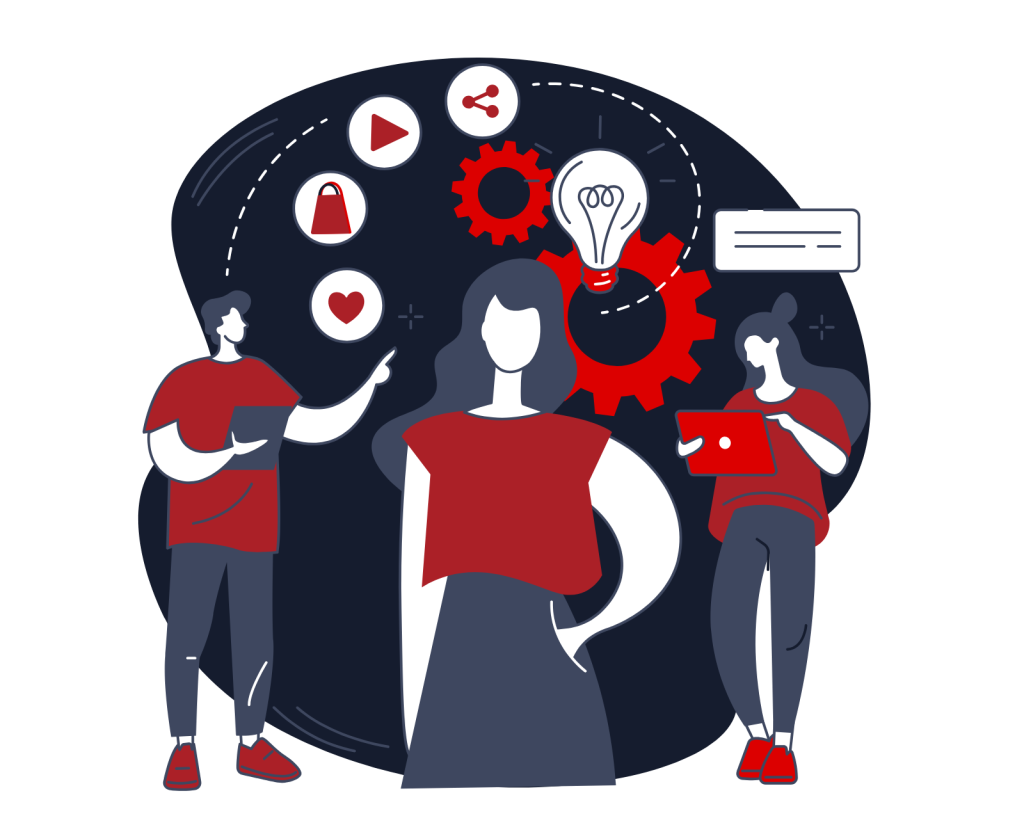Marketing isn’t just about selling a product, it’s about influencing behavior. Every ad, every call-to-action, every color choice in a brand’s logo taps into the psychology of decision-making. The most successful marketers? They don’t just push products. They understand why people buy, how they think, and what emotions drive their choices.
Let’s break down how consumer psychology works in marketing, why it’s so effective, and how brands (including yours) can apply it to create campaigns that don’t just attract customers but make them feel something.
People Aren’t as Rational as They Think
Ask someone why they bought that $6 latte from a trendy café instead of a $2 coffee from the gas station, and they’ll probably give you a logical reason: “It tastes better,” or “I like their beans.” But let’s be real, that’s not the full story.
The truth? That purchase had just as much to do with experience, status, and emotion as it did with quality. The stylish branding, the minimalist decor, the friendly barista calling their name, it all contributes to the perception that this coffee is worth the extra cash.
This is where consumer psychology kicks in: we justify decisions with logic, but we make them based on emotion. Marketers who grasp this idea can shape messages that tap into why people want something, not just what they think they need.
The Psychological Triggers That Influence Buying Decisions
Understanding what makes consumers tick is the difference between marketing that flops and marketing that converts. Here are a few key psychological principles at play:
1. Social Proof: “If Everyone Else Loves It, So Will I”
Ever noticed how restaurants with long lines seem more appealing? Or how you’re more likely to check out a product with hundreds of positive reviews? That’s social proof in action, people trust what others endorse.
How marketers use it:
- Displaying customer testimonials and reviews on landing pages
- Showing “X number of people bought this today” messages
- Partnering with influencers to create a bandwagon effect
Amazon nails this strategy with their “Customers Also Bought” and “Best-Sellers” sections, because if other people love it, it must be good, right?
2. Scarcity: “Act Fast Before It’s Gone”
FOMO (fear of missing out) is real. When people believe something is running out, they’re more likely to act. It’s why limited-time offers, flash sales, and “Only 3 left in stock” notices make us pull the trigger faster than we’d like to admit.
How marketers use it:
- Adding countdown timers to promotions
- Using phrases like “limited stock” or “exclusive offer”
- Restricting access (think waitlists or VIP memberships)
Psychologically, scarcity increases perceived value, if it’s hard to get, it must be worth having.
3. The Anchoring Effect: “That First Price Sticks in Your Head”
Let’s say a luxury handbag is priced at $1,500. The store also carries a slightly less fancy version for $750. That second bag suddenly seems like a bargain, even though $750 is still a steep price.
This is anchoring: the first number you see sets the standard, influencing how you perceive value.
How marketers use it:
- Showing “Was $199, Now $99” to highlight savings
- Listing a premium package first so the basic one feels more affordable
- Displaying side-by-side pricing comparisons to make one option seem like the best deal
Retailers love this trick. Ever wonder why subscription services list their most expensive plan first? Now you know.
Why Emotion-Driven Marketing Works
Let’s take a step back. If logic alone determined consumer behavior, every brand would just list out the features and specs of their products and call it a day. But that’s not how people buy.
Consumers connect with brands that make them feel something, whether it’s excitement, nostalgia, or a sense of belonging.
1. Storytelling Sells
Facts tell. Stories sell. People remember narratives, not bullet points. That’s why brands like Apple don’t just talk about battery life or camera specs, they tell stories about creativity, connection, and possibility.
2. The Power of Relatability
If customers can see themselves in your brand’s story, they’re more likely to engage. This is why user-generated content (UGC) works, real people, real experiences, real emotions.
Nike’s “Just Do It” campaign? It doesn’t push shoes. It sells a mindset.
Applying Consumer Psychology to Your Marketing Strategy
So, how do you make all this work for your brand? Here are a few ways to use psychology to craft marketing that actually resonates:
1. Speak to Emotions, Not Just Features
Instead of just listing what your product does, highlight how it makes life better. Does it save time? Reduce stress? Make someone feel special? That’s the real selling point.
Example: Instead of “Our mattress has memory foam and cooling gel,” say “Wake up refreshed without tossing and turning all night.” See the difference?
2. Use Colors That Influence Mood
Color psychology is real, different hues evoke different emotions. Red creates urgency (think sale signs), blue builds trust (why so many banks use it), and green signals health or sustainability.
3. Make Choices Feel Effortless
Ever been overwhelmed by too many options? That’s decision fatigue. Customers want choices, but not too many. Guide them with:
- The “Best Choice” Label: Highlight the most popular option.
- Simple Pricing Tiers: Three plans work better than ten.
- Clear CTA Buttons: Don’t make people guess where to click.
Psychology Isn’t a Trick, It’s a Tool
Understanding consumer psychology isn’t about manipulation, it’s about communication. When marketers recognize how people think, they can craft messages that truly connect.
The best brands don’t just sell products. They sell feelings, experiences, and stories people want to be part of.
So, the next time you’re crafting a marketing campaign, ask yourself:
- How do I want people to feel?
- What problem am I solving emotionally, not just practically?
- Am I making it easy for customers to decide?
Because at the heart of every great marketing campaign isn’t just strategy, it’s psychology.

